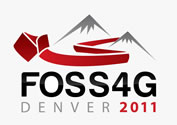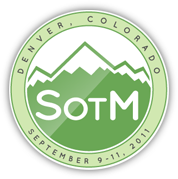Advancing Geospatially-enabled Scientific Workflow Environments with FOSS4G
This paper discusses advances in the development of a software environment with capabilities for accessing, utilising and incorporating geospatial data and processes into the scientific workflows of researchers interested in incorporating earth observation and geospatial analysis into their work. In previous work [McFerren et. al. 2010], we introduced the concept of geospatially-enabled scientific workflows; this paper shares progress made, insights gained and future research avenues exposed in the process of implementing EO4Vistrails (http://code.google.com/p/eo4vistrails/), a geospatial extension to the open-source VisTrails scientific workflow, provenance management, data exploration and visualization system (http://www.vistrails.org). FOSS4G software and toolsets are heavily used in EO4Vistrails to provide spatial database, OGC Web Service, geospatial analysis, data transformation and visualization capabilites. We identify the reasons for the suitability and usefulness of spatial databases in scientific workflows, in the context of wildfire research, noting, for example, that (spatial) SQL provides a clear provenance mechanism and a means to distribute processing tasks. Regarding OGC Web Services, we report that certain services are readily implemented into scientific workflows, notably the WFS and WCS, since the kinds of data they work with are well supported by many tools and applications. Other services are more difficult to incorporate: the SOS outputs data that are difficult to translate into formats acceptable to most scientific software; the WPS is very generic, increasing the challenge of developing workflow modules that can handle dynamically the variability of inputs and outputs that can be expected for a WPS. We highlight how the QGIS PyQT API provides a good integration point for accessing data transformation and visualization functionality, and hint at the possibilities of using Vistrails to provide a “ModelBuilder” like environment for QGIS. We describe the relatively seamless flow of spatial data from the geospatial environment into more conventional scientific data analysis tools (e.g. Numpy, graph theory tools) and the return of results to the geospatial environment where further spatial processing and visualization can be undertaken. This last area is where most further research avenues lie.
References
McFerren, G, van Zyl, T. and Vahed, A. 2010. FOSS Geospatial Libraries In Scientific Workflow Environments: Experiences and Directions. Selected academic posters of FOSS4G 2010. Accessed from http://2010.foss4g.org/presentations_show.php?id=3689 14/04/2011"
Graeme McFerren is a Senior GIS Researcher working in particular on wildfire based applications in southern Africa, heavily utilising FOSS4G tools to accomplish this











